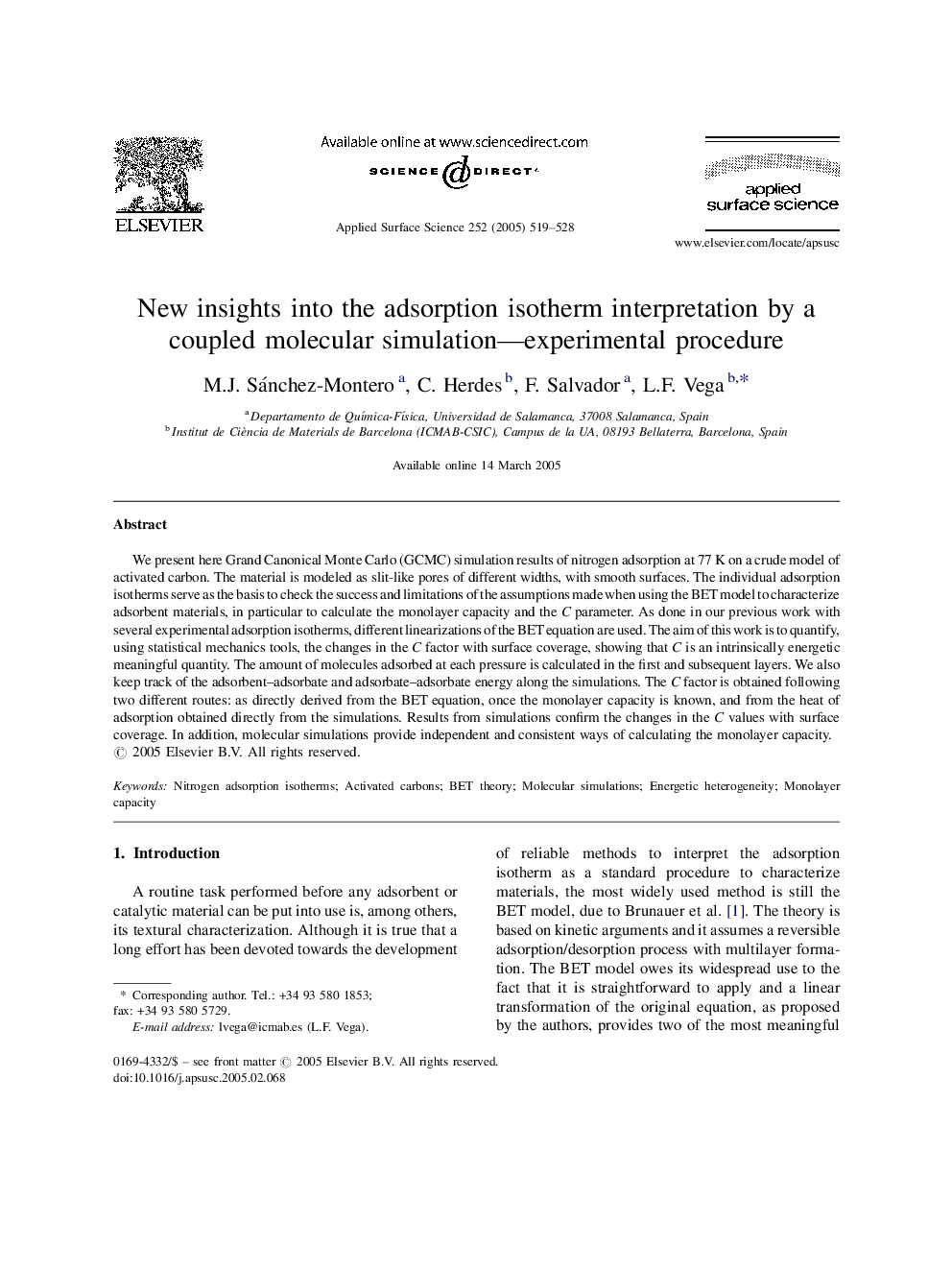| Article ID | Journal | Published Year | Pages | File Type |
|---|---|---|---|---|
| 9566730 | Applied Surface Science | 2005 | 10 Pages |
Abstract
We present here Grand Canonical Monte Carlo (GCMC) simulation results of nitrogen adsorption at 77Â K on a crude model of activated carbon. The material is modeled as slit-like pores of different widths, with smooth surfaces. The individual adsorption isotherms serve as the basis to check the success and limitations of the assumptions made when using the BET model to characterize adsorbent materials, in particular to calculate the monolayer capacity and the C parameter. As done in our previous work with several experimental adsorption isotherms, different linearizations of the BET equation are used. The aim of this work is to quantify, using statistical mechanics tools, the changes in the C factor with surface coverage, showing that C is an intrinsically energetic meaningful quantity. The amount of molecules adsorbed at each pressure is calculated in the first and subsequent layers. We also keep track of the adsorbent-adsorbate and adsorbate-adsorbate energy along the simulations. The C factor is obtained following two different routes: as directly derived from the BET equation, once the monolayer capacity is known, and from the heat of adsorption obtained directly from the simulations. Results from simulations confirm the changes in the C values with surface coverage. In addition, molecular simulations provide independent and consistent ways of calculating the monolayer capacity.
Keywords
Related Topics
Physical Sciences and Engineering
Chemistry
Physical and Theoretical Chemistry
Authors
M.J. Sánchez-Montero, C. Herdes, F. Salvador, L.F. Vega,
